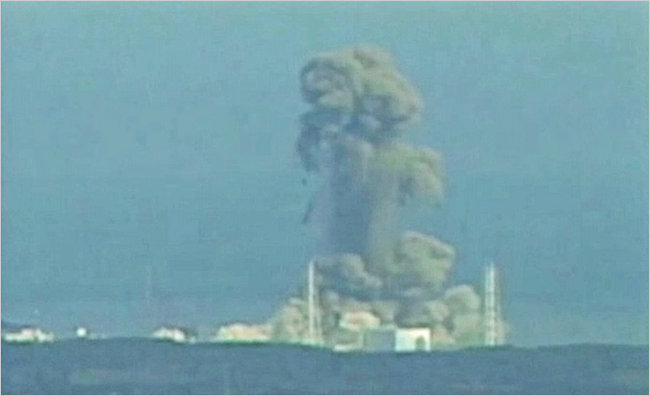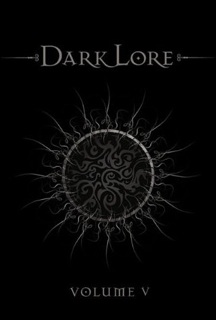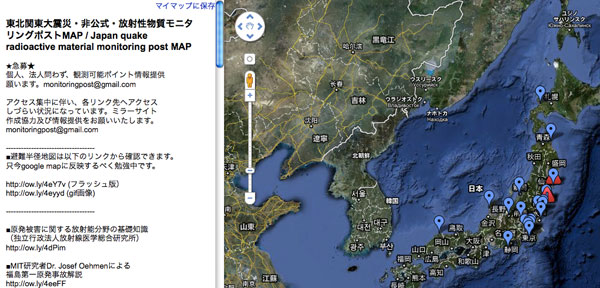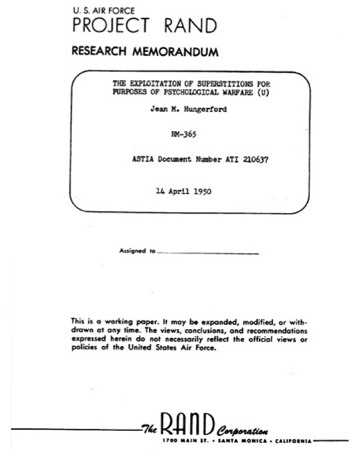The Latest from Boing Boing |  |
- Poor countries have more piracy because media costs too much -- report
- Diego Stocco plays a tree
- The Fukushima Fifty
- Japan: TEPCO reports a new fire at Reactor No. 4
- NASA: Japan quake appears to have shortened Earth days, shifted axis
- Japan nuke safety agency: crack in roof of building ; 2 workers missing after explosion
- Japan: Design of reactors long questioned; seawalls didn't help
- Japan: what kinds of post-trauma counseling help (or hurt)?
- IAEA chief: possible core damage in Japan plant, outcome unclear
- As Japan nuclear fears spread, so does crowdsourced radiation tracking
- Coke found at NASA facility. Again.
- Unicorn Chaser corkscrew
- Carcassonne is the only board game I can stand
- Relatives of man killed protecting Starbucks sue Starbucks
- Rings made from circuit boards
- David Ellis's "True Value (paint fukette)" kinetic sound sculpture
- An expert in one field is not the same thing as An Expert
- Implantable sensor to detect cancer growth
- Erik Davis on HP Lovecraft
- USPS sends local package on a 6,300 mile detour
- M-Paisa: mobile phone microbanking for war zones and the developing world
- Superstitions as weapons, 1950
- Yves Béhar's mobile phone
- Raquel Welch title sequence for Fathom (1967)
- Chain World: a game intended to inspire a religion
- Charles Choi's dispatches from Chernobyl
- Reliable sources of Japan crisis information/updates
- Japan: no-fly zone established near nuclear plants
- Japan Quake: first-person tsunami video becomes iconic
- Fukushima crisis: US and int'l. nuclear experts heading to Japan
| Poor countries have more piracy because media costs too much -- report Posted: 16 Mar 2011 12:39 AM PDT Media Piracy in Emerging Economies, an academic report on pricing and copyright infringement in poor countries, comes to the conclusion that high media prices (as measured against the average wage in poor countries) are responsible for piracy -- that is, when you control for social attitudes towards copying, enforcement differences, and so on, the largest predictor of whether a country will have rampant copyright infringement is whether the media in that country is priced high relative to peoples' earning power. To make their point, the authors have released the report under a provocative "Consumer's Dilemma license" that charges escalating rates depending on whether your IP address is in a rich or poor country (I wrote about this here last week). Get the Report (SSRC) (via /.)
|
| Posted: 15 Mar 2011 03:41 PM PDT Sound designer and composer Diego Stocco plays a tree as a beautifully rhythmic musical instrument, recording it using a custom stethoscope and other masterful techniques. From his description: In the garden of my house there's a tree with lots of randomly grown twigs. It looks odd and nice at the same time. One day I asked myself if I could create a piece of music with it.Diego Stocco (via Analog Industries) |
| Posted: 15 Mar 2011 03:44 PM PDT  In the Guardian, a story on the 50 to 70 TEPCO employees, now known in English as the Fukushima 50, who are working to prevent full-scale nuclear disaster at the beleaguered power plant. Wearing protective gear, "some are assessing the damage and radiation levels caused by the explosions, while others cool stricken reactors with seawater to try to avert a potentially catastrophic release of radiation." Prime Minister Kan today warned the company of serious consequences should it decide to remove the remaining workers before the plant has been made safe. "In the event of a withdrawal, I'm 100% certain that the company will collapse. You must be determined to solve this." Domain-traders and Hollywood film agents, start your "Fukushima Fifty" engines now. At the time of this blog post, fukushima50.com and fukushimafifty.com are taken. No word on film scripts. |
| Japan: TEPCO reports a new fire at Reactor No. 4 Posted: 15 Mar 2011 04:27 PM PDT  Reuters: "Breaking news from NHK, quoting Tokyo Electric Power: Fire breaks out at Fukushima Daiichi No. 4 reactor." From NHK broadcast now: Fire detected on NE upper corner of the outer structure of No. 4 reactor, they are trying to extinguish now. NHK analyst says it looks like another hydrogen explosion/fire. Flames now rising from reactor. Cause not yet known (or disclosed). NHK report in Japanese, online. Government officials are again urging survivors in the area to stay indoors. On NHK TV right now, the mayor of a town in the high-risk zone is pointing out that residents cannot even go out to bury the dead from the quake and tsunami (and there are many, many dead) because they are fearful of radiation exposure. |
| NASA: Japan quake appears to have shortened Earth days, shifted axis Posted: 15 Mar 2011 02:36 PM PDT NASA reports that the March 11, magnitude 9.0 earthquake in Japan may have shortened the length of each Earth day by about 1.8 microseconds and shifted its figure axis by about 17 centimeters . "But don't worry--you won't notice the difference," and "calculations will likely change as data on the quake are further refined. " |
| Japan nuke safety agency: crack in roof of building ; 2 workers missing after explosion Posted: 15 Mar 2011 02:31 PM PDT Following Tuesday's explosion at the No. 4 reactor at a Fukushima nuclear power plant, two workers are missing, according to Japan's nuclear safety agency. In a press conference today, a spokesman also said there is a crack in the roof of the reactor building. |
| Japan: Design of reactors long questioned; seawalls didn't help Posted: 15 Mar 2011 02:26 PM PDT  Screen capture from video of an explosion at the Fukushima Daichi plant in Japan (Reuters) In the New York Times today, Tom Zeller reports on warnings issued repeatedly as far back as 1972 on safety issues involving the GE-designed reactors at Fukushima: If the cooling systems ever failed at a Mark 1 nuclear reactor, the primary containment vessel surrounding the reactor would probably burst as the fuel rods inside overheated. Dangerous radiation would spew into the environment. Now, with one Mark 1 containment vessel damaged at the embattled Fukushima Daiichi nuclear plant and other vessels there under severe strain, the weaknesses of the design -- developed in the 1960s by General Electric -- could be contributing to the unfolding catastrophe.And, related: Norimitshu Onishi in the New York Times reports on Japan's dependence on seawalls as a protective barrier against tsunamis.
Their weaknesses were most evident in the crisis at the Daiichi and Daini nuclear power plants, both located along the coast close to the earthquake zone. The tsunami that followed the quake washed over walls that were supposed to protect the plants, disabling the diesel generators crucial to maintaining power for the reactors' cooling systems during shutdown. (thanks, John Schwartz) |
| Japan: what kinds of post-trauma counseling help (or hurt)? Posted: 15 Mar 2011 02:13 PM PDT From a TIME Magazine piece on post-trauma counseling for survivors in Japan: "Experience with past disasters suggest that some types of psychological first aid may help those who have lived through them, but others can actually cause harm." |
| IAEA chief: possible core damage in Japan plant, outcome unclear Posted: 15 Mar 2011 02:06 PM PDT ""The problem is very complicated, we do not have all the details of the information so what we can do is limited. Is it a crack? Is it a hole? Is it nothing? That we don't know yet. It is difficult to foresee whether the future developments will be a worsening or improving of the situation. We do not know. There are mixed indications."—Yukiya Amano, director general of the International Atomic Energy Agency (IAEA), the UN's atomic watchdog agency, at a press conference today. (Reuters) |
| As Japan nuclear fears spread, so does crowdsourced radiation tracking Posted: 15 Mar 2011 02:10 PM PDT Above, "Tokyo Geiger Counter," built with this DIY kit. The location is Tokyo/Kotoku. (thanks, Francesco Fondi) CNET: "The intensifying nuclear crisis in Japan is raising anxieties on both sides of the Pacific over the potential impacts of radiation exposure, and a relative dearth of official information on radiation levels is leading some to turn to crowdsourced options. (...) With official estimations of the threat from radiation across Japan changing rapidly and sometimes inconsistent, a number of real-time amateur radiation monitors have popped up online." Below, a Google Map of "unofficial" radiation monitoring sites. |
| Coke found at NASA facility. Again. Posted: 15 Mar 2011 12:49 PM PDT Remember last year when someone dropped their baggie of blow in a space shuttle hangar at Kennedy Space Center? Happened again. From CNN: "Law enforcement personnel field tested the substance, which indicated a positive test for cocaine," said Renee Juhans, an executive officer with (NASA's Inspector General's Office)."Powder at Kennedy Space Center tests positive for cocaine" |
| Posted: 15 Mar 2011 12:39 PM PDT  When you prefer something more refined than a typical Unicorn Chaser, you might open a fine vintage of Charles Shaw with this elegant Screwnicorn Corkskrew. It's $10 from those crazy coots at Gama-Go. Screwnicorn Corkscrew When you prefer something more refined than a typical Unicorn Chaser, you might open a fine vintage of Charles Shaw with this elegant Screwnicorn Corkskrew. It's $10 from those crazy coots at Gama-Go. Screwnicorn Corkscrew |
| Carcassonne is the only board game I can stand Posted: 15 Mar 2011 12:01 PM PDT  I don't like playing board games. I used to like playing them (Chess, Risk, Scrabble, Monopoly, Tactics II) but for some reason I don't understand, I became bored with them in my early 20s. So I'm surprised that I like playing Carcassonne so much. (I should make it clear that I've never actually played the physical board game of Carcassonne; I've only played the iOS version of the game on my iPad and iPhone. I don't like playing board games. I used to like playing them (Chess, Risk, Scrabble, Monopoly, Tactics II) but for some reason I don't understand, I became bored with them in my early 20s. So I'm surprised that I like playing Carcassonne so much. (I should make it clear that I've never actually played the physical board game of Carcassonne; I've only played the iOS version of the game on my iPad and iPhone. I bought Carcassonne for my iPad ($9.99 and it runs on the iPhone and the iPad) over a month ago, and my wife, our seven-year-old daughter, and I play it together at least three evenings a week, and we haven't grown tired of it yet. The object of the game is to take ownership of villages, roads, and pastures that you piece together with tiles randomly drawn (the are 70 tiles in the game). The rules are simple enough that my seven-year-old caught on immediately (it helps her, and my wife and I, that the iOS version doesn't let you place a tile in a forbidden spot, and that it automatically keeps score). The graphics are beautiful, the gameplay is smooth, and it has a nice guitar soundtrack that has a Pavlovian effect on us when we play it. A typical game lasts about 30 minutes, which is the perfect amount of time for a board game. It also seems to be bug free - not once has it crashed on us, which is pretty remarkable, considering most iPad games I've played crash from time to time. A couple of friends have told me that boardgames made in the last 20 years or so are much more fun than the ones that I used to play, and that I ought to give them a try. They recommend Ticket to Ride and the Settlers of Catan. I just bought Catan HD for the iPad but haven't played it yet. I'll wait for Ticket to Ride to show up on the iTunes store before I try it. |
| Relatives of man killed protecting Starbucks sue Starbucks Posted: 15 Mar 2011 11:58 AM PDT Several years ago at a St. Louis area Starbucks, Roger Kreutz, then 54, saw Aaron Poisson, then 19, snatch the tip jar from the counter and run off. Kreutz gave chase and as Poisson tried to getaway in his car, he knocked Kreutz to the ground. Sadly, Kreutz died of head injuries. Poisson served a year in prison for involuntary manslaughter. But last Monday, Kreutz's relatives filed a wrongful death lawsuit. Not against Poisson, mind you, but against Starbucks. From St. Louis Today: It alleges that Starbucks "did not employ security to prevent the perpetration of such crimes" and that it "invited the act of perpetration of said crime" by having a tip jar."Estate of man sues Starbucks over death" (Thanks, Bob Pescovitz!) |
| Rings made from circuit boards Posted: 15 Mar 2011 04:33 AM PDT  Jeweller Yuma Fujimaki has many beautiful pieces for sale, but I'm especially taken by these rings made from circuit boards and RAM sticks that have been cut, polished and reformed into jewellery. Jeweller Yuma Fujimaki has many beautiful pieces for sale, but I'm especially taken by these rings made from circuit boards and RAM sticks that have been cut, polished and reformed into jewellery. Yuma Fujimaki (via Super Punch) |
| David Ellis's "True Value (paint fukette)" kinetic sound sculpture Posted: 15 Mar 2011 11:42 AM PDT [video link] I really enjoyed the rhythmic weirdness of David Ellis's "True Value (Paint Fukette)," recently installed at Joshua Liner Gallery. Roberto Carlos Lange composed the percussive "score." David Ellis: PULSE (Thanks, Greg Long!) |
| An expert in one field is not the same thing as An Expert Posted: 15 Mar 2011 11:43 AM PDT  There's a popular blog post making the rounds this week, written by an MIT scientist, called "Why I am not worried about Japan's nuclear reactors." I saw it over the weekend, and decided not to post it here because, while it offered some good insight on how the systems of a nuclear power plant work, it also contained some information of which I was skeptical. Plus, once I actually read the thing closely, I noticed that the MIT scientist was not an MIT nuclear scientist, but, rather, a guy who studies risk management in corporations. That distinction matters. One of the things I've become more vocal about, over the past couple of years, is the fact that an expert in one subject is not the same thing as An Expert. Scientists spend years of their lives studying specific phenomena. But, outside of their field, they might not know more about a given subject than you or I do. When you ask an expert in a specific subject to take on the role An Expert, they're likely to make mistakes. They might also have a very different perspective on what the facts mean, and very different biases, compared to someone who studies the specific subject. This is why asking policy analysts to explain nuclear physics is a bad idea*. It's not that these people have nothing to add to the conversation. In fact, in a crisis like this, it's really valuable to have the guys who study policy, history, and regulation come in and talk about policy, history, and regulation. But, if you want the most accurate explanation of, and perspective on, nuclear physics, you're really better off talking to a nuclear physicist. And that's precisely what MIT has now done with that "Why I'm Not Worried" essay. On Monday, the essay was turned over to the Department of Nuclear Science and Engineering, which set a team of field-specific experts to editing it. The essay has now been re-posted at a new website, and it's been changed. The stuff many people liked about it—a clear step-by-step explanation of what happened during the early hours of the Fukushima nuclear crisis—is still there. But it's now been vetted for accuracy by people who are far more likely to know what is accurate and what isn't. One of the most obvious changes the nuclear scientists made: the title. Turns out, the facts that lead a risk management expert to not worry about the problems at the Fukushima nuclear plants are interpreted rather differently by nuclear energy experts.
*Tangentially, this is also why meteorologists or mechanical engineers aren't the best people to explain the science of climate change. That would be a climatologist. Image: Some rights reserved by Mai Le |
| Implantable sensor to detect cancer growth Posted: 15 Mar 2011 11:33 AM PDT This tiny sensor can be injected into the body during a biopsy to keep a constant vigil on tumor growth. Developed at MIT, the device is packed with magnetic nanoparticles and proteins that bind to particular molecules that are associated with certain cancers. The device is "read" via MRI scan but a future sensor may be interrogated with a magnetic wand waved over the body. The system may also have applications in heart disease. From New Scientist: "Implantable sensor tracks cancer in the body" |
| Posted: 15 Mar 2011 12:51 PM PDT   ("hello-cthulu" from Sneakykitty) In the excellent Volume 5 of Darklore Volume 5Written mostly in the 1920s and '30s, Lovecraft's work builds a somewhat rickety bridge between the florid decadence of fin de siècle fantasy and the more "rational" demands of the new century's science fiction. His early writing is gaudy Gothic pastiche, but in his mature Cthulhu tales, Lovecraft adopts a pseudodocumentary style that utilizes the language of journalism, scholarship, and science to construct a realistic and measured prose voice which then explodes into feverish, adjectival horror. Some find Lovecraft's intensity atrocious – not everyone can enjoy a writer capable of comparing a strange light to "a glutted swarm of corpse-fed fireflies dancing hellish sarabands over an accursed marsh.""Calling Cthulhu" (Daily Grail) Darklore Volume 5 |
| USPS sends local package on a 6,300 mile detour Posted: 15 Mar 2011 11:10 AM PDT Consumerist reader Justin sent a textbook he'd sold on eBay to a buyer two miles from his house in California; it took a little longer to arrive than he'd counted on. He discovered why when he looked up the tracking data for his parcel and discovered that it had been shipped by way of Massachusetts! USPS Sent My Package An Extra 6,283 Miles Before Reaching Destination 2 Miles Away |
| M-Paisa: mobile phone microbanking for war zones and the developing world Posted: 15 Mar 2011 11:09 AM PDT M-Paisa (AKA M-Pesa) is an extremely successful and efficient scheme for managing micropayments and electronic banking using SMS. In more developed and stable places, the system uses ATMs as end-points; in rougher conditions, "human ATMs" take cash in and pay it out. It's so successful that the Afghan National Police in Kabul are paid by M-Paisa transfers; the system also allows person-to-person payments in the form of mobile airtime credit that can be converted to cash. Here's how it would work in Afghanistan. Say Abdul in Kabul wants to travel to Herat, but he is afraid he might be robbed along the way -- a very reasonable suspicion. So Abdul sends 400 rupees to himself, or to his friend Haji who lives in Herat. Abdul gives his local money agent the 400 rupees which is entered into his account. Abdul can then travel with no cash. When he gets to Herat, he goes to the local agent, and gives his number and pint to redeem his cash. In Kenya, which is a little more developed, the agent can be a corner ATM. The recipient types in their phone number and PIN and out comes the cash.Pocket Banks (via Command Line) |
| Superstitions as weapons, 1950 Posted: 15 Mar 2011 10:27 AM PDT Over at Mark Pilkington's Mirage Men blog, named after his excellent book, he reads through this delightfully named 1950 report from the RAND Corporation: "The Exploitation of Superstitions for Purposes of Psychological Warfare." From the Mirage Men blog: "RAND, Superstition and Psychological Warfare" (Mirage Men) "The Exploitation of Superstitions for Purposes of Psychological Warfare" (PDF at rand.org) |
| Posted: 15 Mar 2011 10:34 AM PDT After his work in recent years designing the Jawbone Bluetooth Headset and the OLPC's XO "$100 laptop," celebrity designer Yves Béhar has branched out. First, there was the Form 2 sex toy and now he's created a profoundly expensive mobile phone for Copenhagen-based Æsir, a new mobile tech company founded by Thomas Møller Jensen, Mathias Rajani, and Jens-Martin Skibsted. One assumes that the lessons Béhar learned from the Form 2's good vibrations have been applied to this device's silent mode as well. The +yvesbéhar phone is €7,250.00 in stainless steel or €42,000.00 in gold, seen here. From an interview with Béhar on the Æsir site: +yvesbéhar phone |
| Raquel Welch title sequence for Fathom (1967) Posted: 15 Mar 2011 09:36 AM PDT [Video Link] It's been over three years since I posted a video of Raquel Welch in a space girl outfit dancing in front of the 1968 Mexico City Olympics public sculpture project, so I think it's time for another video starring Ms. Jo Raquel Tejada. Above is the title sequence to the movie Fathom (1967). It was created by Maurice Binder, who also created the famous "gun barrel" sequence for the James Bond movies, and the zero gravity striptease title for Barbarella. (Via Little Hokum Rag) |
| Chain World: a game intended to inspire a religion Posted: 15 Mar 2011 04:29 AM PDT A report from GDC describes the "Game Design Challenge 2011: Bigger than Jesus" winning entry, Chain World. The challenge had been to design a game that's also a religion, and so winning designer Jason Rohrer created Chain World, based on Minecraft, intended to be played in series by individual players, each of whom change the world, leaving a legacy for the next: GDC: Chain World: Crafting a Religion (via Super Punch)
|
| Charles Choi's dispatches from Chernobyl Posted: 15 Mar 2011 09:18 AM PDT Back in December, LiveScience.com's Charles Choi wrote an article about tourism at the Chernobyl disaster site. Guess where he's reporting from this week?
There's some really interesting stuff in here. The Chernobyl exclusion zone isn't one monolithic thing, Choi discovers. Some areas are already reasonably safe, while others are places that humans will probably never live again. Even the animal impacts are varied. The creatures that live here are thriving, and don't seem to be passing on genetic mutations. But, Choi points out, the species diversity has gone down significantly since the accident. This is just the first in a series of articles Choi will be writing for Scientific American from his trip to Chernobyl. Photo: Charles Choi. Taken inside the control room for destroyed reactor No. 4 at the Chernobyl nuclear power plant. |
| Reliable sources of Japan crisis information/updates Posted: 15 Mar 2011 09:01 AM PDT  Michael Levi, senior fellow on energy and the environment at the Council on Foreign Relations, offers a nice bit of advice for vetting the quality of talking heads called in to discuss the earthquake, tsunami, and nuclear crisis in Japan. Short version: Be skeptical of policy analysts who want to school you on physics. He also suggests a couple of good, reliable sources of information, including David Lochbaum with the Union of Concerned Scientists; Olli Heinonen, formerly of the IAEA and now at Harvard, and the industry site I suggested yesterday, World Nuclear News. I'd also add to that: Cristine Russell, who has been linking to some great articles on her Twitter feed and is putting together a list of who is getting this story right, and who's not; and New Scientist's ongoing coverage as part of their Short Sharp Science blog. Image: Has nothing to do with any of this, except that I though we could all use some cute kitten pictures right about now. Some rights reserved by uzi978 |
| Japan: no-fly zone established near nuclear plants Posted: 15 Mar 2011 08:59 AM PDT If you're wanting to stay on top of the fast-moving story of the nuclear crisis in Japan, one good source: the IAEA's updates, on Facebook (the iaea.org website is intermittently overloaded). Today, updates on recent explosions and fires, damaged reactors and pools storing spent fuel, and word that a "30-kilometer no-fly zone has been established around the Daiichi plant." |
| Japan Quake: first-person tsunami video becomes iconic Posted: 15 Mar 2011 08:58 AM PDT [video link] Over the weekend, I blogged a pointer to this video, which was shot by a local resident in a northern Japan town devastated by Friday's great quake and tsunami. The video has since gone very, very viral; and is now uploaded to YouTube where more of you will be able to view it. I am not a fan of disaster porn indulgence, but I share this again because the video has so clearly become a single, iconic item in this unfolding story. I suspect that years from now, we (and our kids) will look back at this video as an important digital relic that captured the force of the disaster, and the horror its victims faced. |
| Fukushima crisis: US and int'l. nuclear experts heading to Japan Posted: 15 Mar 2011 08:46 AM PDT Noriyuki Shikata, Deputy Cabinet Secretary for Public Relations and Director of Global Communications at Prime Minister's Office of Japan, tweeted this morning that the Japanese Government is planning to receive a team of experts from the IAEA, and on March 15, eight experts of the U.S. NRC. "They will give technical advice to respond to Fukushima I," said Shikata. "In our utmost efforts to resolve the situation of Fukushima Daiichi, Japanese Government will closely collaborate with these U.S. experts. Japan truly appreciates the U.S. assistance of dispatching nuclear experts to Fukushima in addition to help by US Forces in Japan and USAID."
|
| You are subscribed to email updates from Boing Boing To stop receiving these emails, you may unsubscribe now. | Email delivery powered by Google |
| Google Inc., 20 West Kinzie, Chicago IL USA 60610 | |

 * Prices are too high. High prices for media goods, low incomes, and cheap digital technologies are the main ingredients of global media piracy. Relative to local incomes in Brazil, Russia, or South Africa, the retail price of a CD, DVD, or copy of MS Office is five to ten times higher than in the US or Europe. Legal media markets are correspondingly tiny and underdeveloped.
* Prices are too high. High prices for media goods, low incomes, and cheap digital technologies are the main ingredients of global media piracy. Relative to local incomes in Brazil, Russia, or South Africa, the retail price of a CD, DVD, or copy of MS Office is five to ten times higher than in the US or Europe. Legal media markets are correspondingly tiny and underdeveloped. 
 In another study with mice, (researcher Michael) Cima transformed the tumour-monitoring device into a heart-attack detector by lining the inside of the capsule with antibodies that bind to three different proteins released by heart muscle cells when they burst open.
In another study with mice, (researcher Michael) Cima transformed the tumour-monitoring device into a heart-attack detector by lining the inside of the capsule with antibodies that bind to three different proteins released by heart muscle cells when they burst open. Basically, I sold a textbook online and the buyer was actually in the same city (Davis, California) as me. I shipped my book at the university post office, which was less than two miles from the destination. If anyone's wondering why I just didn't personally deliver the book, sites like Amazon and eBay basically need proof of delivery. The estimated delivery time was about a day, which was expected. Instead of delivering the book the next day, USPS decided to ship the book all the way to Bell Gardens, CA, then to Springfield, MA, then West Sacramento, CA, and finally back to Davis, where it was delivered a week after it was shipped. Funny thing is, the worker even confirmed with me that the package was shipping to Davis.
Basically, I sold a textbook online and the buyer was actually in the same city (Davis, California) as me. I shipped my book at the university post office, which was less than two miles from the destination. If anyone's wondering why I just didn't personally deliver the book, sites like Amazon and eBay basically need proof of delivery. The estimated delivery time was about a day, which was expected. Instead of delivering the book the next day, USPS decided to ship the book all the way to Bell Gardens, CA, then to Springfield, MA, then West Sacramento, CA, and finally back to Davis, where it was delivered a week after it was shipped. Funny thing is, the worker even confirmed with me that the package was shipping to Davis.  'It seems likely that superstitions flourish in an atmosphere of tension and insecurity', writes its author, Jean Hungerford, and her timing couldn't have been more perfect. The paper was published for the US Air Force on 14 April 1950, just as Cold War tensions were first reaching levels of serious discomfort. In the previous six months, the Soviets had detonated their first atom bomb, China and the USSR had signed a pact of allegiance and Los Alamos physicist Klaus Fuchs had confessed to passing atom bomb secrets to the Soviets...
'It seems likely that superstitions flourish in an atmosphere of tension and insecurity', writes its author, Jean Hungerford, and her timing couldn't have been more perfect. The paper was published for the US Air Force on 14 April 1950, just as Cold War tensions were first reaching levels of serious discomfort. In the previous six months, the Soviets had detonated their first atom bomb, China and the USSR had signed a pact of allegiance and Los Alamos physicist Klaus Fuchs had confessed to passing atom bomb secrets to the Soviets... With the Æsir phone, I wanted to show an alternative to the sea of smartphones and their deluge of features. In an age when the industry seems to think that phones aren't for speaking anymore, I wanted to focus on the idea of voice, clarity and simplicity.
With the Æsir phone, I wanted to show an alternative to the sea of smartphones and their deluge of features. In an age when the industry seems to think that phones aren't for speaking anymore, I wanted to focus on the idea of voice, clarity and simplicity.  The result is Chain World, and a strict set of laws that all Chain World players must follow. There's only one true copy of Chain World and it exists on a USB drive Rohrer carried with him into the GDC session. This USB drive contains a Minecraft world and a custom script that Rohrer created. A player of Chain World inserts the USB stick and loads a Minecraft world onto his PC. He then plays in this Minecraft world as usual and does whatever he desires.
The result is Chain World, and a strict set of laws that all Chain World players must follow. There's only one true copy of Chain World and it exists on a USB drive Rohrer carried with him into the GDC session. This USB drive contains a Minecraft world and a custom script that Rohrer created. A player of Chain World inserts the USB stick and loads a Minecraft world onto his PC. He then plays in this Minecraft world as usual and does whatever he desires. 
No comments:
Post a Comment